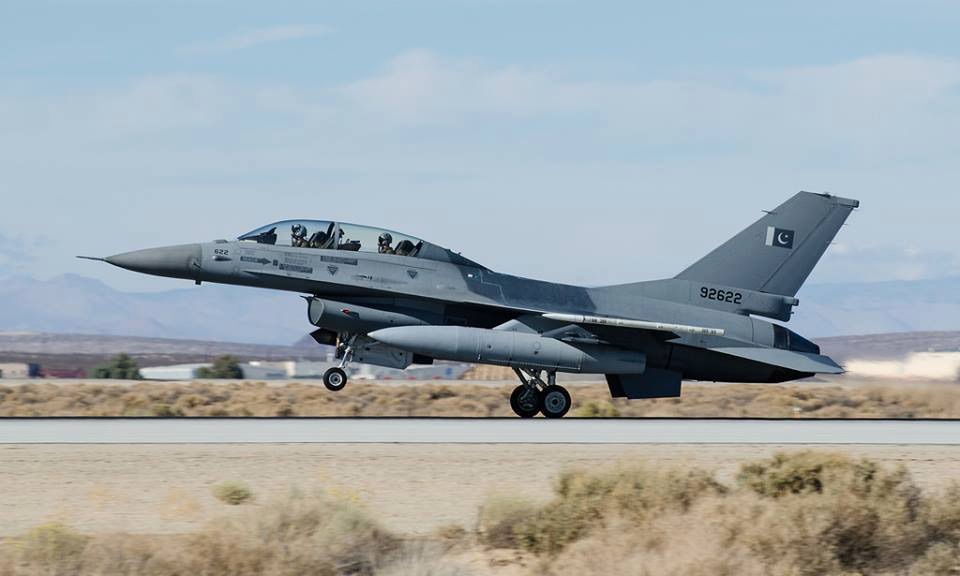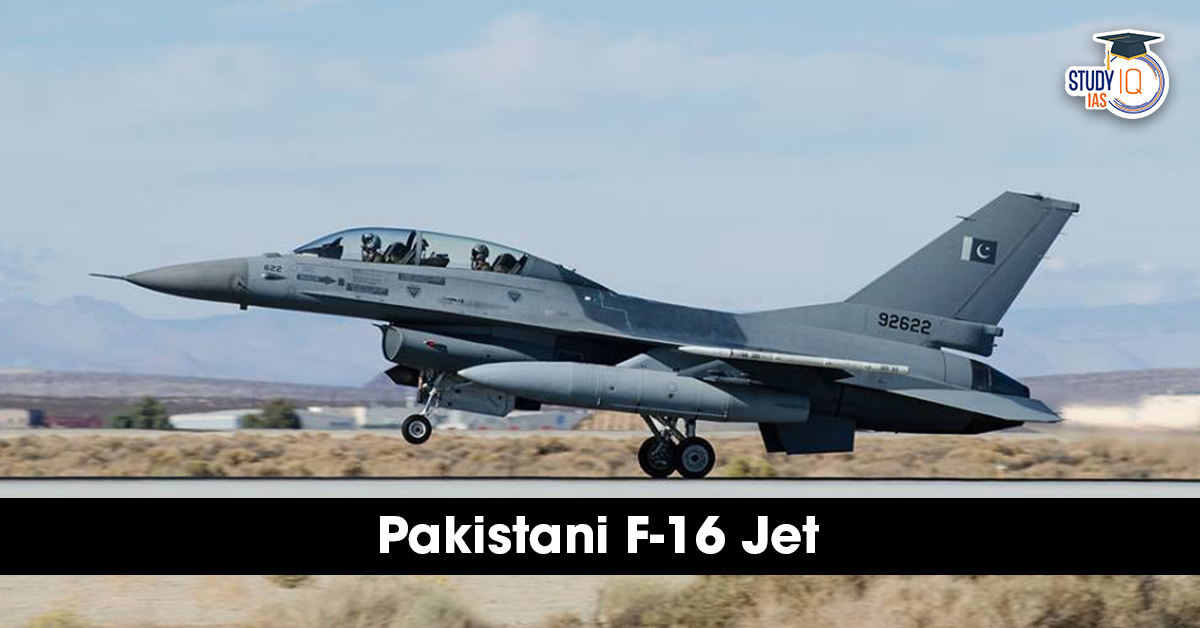Table of Contents
Amid heightened tensions between India and Pakistan, a Pakistani F-16 pilot is said to have been arrested after an Indian Surface-to-Air Missile (SAM) system downed the Pakistani F-16 Jet, which had flown out of Pakistan’s Sargodha Air Base. Sargodha is a front-line airbase of Pakistan and among the best-protected in the country, situated in the country’s Punjab province.
There are hearsay reports about the shooting down of Pakistan’s JF-17—a lightweight, single-engine, fourth-generation, multirole combat aircraft in the course of the current ‘Operation Sindoor‘ by India’s armed forces following the Pahalgam terrorist attack, which killed 26 tourists, among them a Nepalese.
India Shot Down Pakistani F-16 Jet
15 days after the Pahalgam terror attack, the Indian Air Force retaliated through Operation Sindoor on 6-7 May night. Indian missiles have conducted air strikes at 9 locations in Pakistan, such as the Jaish-e-Mohammed headquarters in Bahawalpur and the Lashkar-e-Taiba headquarters in Muridke.
Pakistan, which was shocked by this airstrike, tried to take revenge immediately, but it had to bear the brunt of this too. The Pakistani Air Force attempted to intrude into Indian airspace, but the already functioning Indian air defence system downed the Pakistani F-16 Jet imported from America. Yet some news sources have reported that the JF-17 fighter aircraft imported by the Pakistani Army from China has become a victim of the Indian air defence system.
In the meantime, a Chinese-produced PL-15 active radar-guided air-to-air (AAM) long-range missile was retrieved in Hoshiarpur, Punjab. The missile is thought to have been launched by a JF-17.
Pakistan’s fighter jets have been shot down amidst a flurry of drone and missile strikes fired from Pakistan, targeting military bases at Jammu, Pathankot, and Udhampur—locations close to the International Border (IB) in Jammu and Kashmir (J&K).
| Integrated Defence Staff (IDS) Update |
| Integrated Defence Staff (IDS) in a release stated that Pakistan targeted “Military Stations of Jammu, Pathankot and Udhampur near the International Boundary, in Jammu and Kashmir, hit by Pakistan with the aid of missiles and drones.”
IDS stated, “There was no loss and the threat was neutralised by the Indian Armed Forces according to procedure with kinetic and non-kinetic measures.” |
About the Pakistani F-16 Jet
Pakistan procured its initial F-16s in 1983 from the United States under the “Peace Gate” program, amid the Cold War and Soviet occupation of Afghanistan. The initial models were F-16A/B Block 15 models.

Years later, Pakistan received more F-16s, but the country also experienced embargos because of its nuclear program, and deliveries were delayed, and maintenance became tricky. During the 2000s, following Pakistan’s assistance in the “War on Terror,” the USA committed to selling new F-16C/D Block 50/52+ aircraft and upgrading existing aircraft to the F-16 AM/BM MLU (Mid-Life Update) standard.
Capabilities of F-16 Fighter Jet
- The F-16 is a single-seat, multi-role fighter aircraft, famous for its manoeuvrability and agility, accomplished through its fly-by-wire flight control system.
- It is capable of attaining high speeds (Mach 2) and can be equipped with heavy weapons payloads.
- Later models, such as the Block 52+, feature advanced radar (AN/APG-68(V)9), electronic warfare systems, and can be armed with advanced missiles such as the AIM-120C5 AMRAAM (Beyond Visual Range).
- The F-16 has been employed by the PAF in several roles, such as air defence, interception, and strike missions.
Restrictions and Challenges
The key feature of Pakistan’s fleet of F-16s is the end-use limitations imposed by America. With these agreements, Pakistan is stated to be restrained from employing F-16s and US-sourced munitions against India’s forces in offensive operations and also has their employment in counter-terror and interior defence roles restricted. Their usage is kept under monitoring by the US for compliance checks.
Maintenance has been an increasing problem for the PAF F-16 fleet owing to financial issues and, at times, delays in supplying spare parts from the US. Some financial aid has been given by the US, but under tight monitoring.
Pakistani F-16 Jet vs India’s Rafale
Following Operation Sindoor, India and Pakistan’s air power equilibrium has taken the centre stage. Reports indicate that India’s Rafale jets carried out the pinpoint attacks. Both the Dassault Rafale and the F-16 Fighting Falcon are very powerful multirole fighter aircraft, but from different generations with different capabilities.
| Comparison | F-16 Jet | Rafale |
| Generation | Generally regarded as a 4th-generation fighter (although the newer Block 70/72 variants have major improvements). First flew in the 1970s. | Categorised as a 4.5 generation fighter. A newer aircraft, first flying in the late 1980s and entering service in the early 2000s. |
| Origin | American, manufactured by Lockheed Martin (originally General Dynamics). | French, manufactured by Dassault Aviation. |
| Engines | Single-engine. | Twin-engine, generally providing more thrust and redundancy. |
| Maneuverability | Both are extremely manoeuvrable. The F-16 was specifically created for high-manoeuvrability dogfighting and features a lighter airframe, thus, it is outstanding at close-range manoeuvrability. | The Rafale features even better manoeuvrability thanks to its delta wing and canard layout, in conjunction with a very advanced fly-by-wire system, which enables it to be able to support high-G loads even at very high angles of attack. Its greater thrust-to-weight ratio further lends itself to improved sustained performance. |
| Radar and Sensors | Its earlier iterations have less sophisticated radar. Its current F-16 Block 70/72 has the APG-83 AESA (Active Electronically Scanned Array) radar, which gets its capabilities closer to that of the Rafale. | With the Thales RBE2 AESA radar, which is better in detection range and can detect more targets at the same time (up to 40 reportedly). Its SPECTRA electronic warfare system is also better, with improved jamming and threat detection features. |
| Weapon Systems | May carry a broad selection of air-to-air and air-to-ground weapons, including the AIM-120 AMRAAM for beyond-visual-range (BVR) fighting. | Also has a varied weapons loadout, including the new Meteor BVR missile (with greater range and no-escape zone than AMRAAM), the SCALP cruise missile for deep strikes, and the HAMMER precision-guided munition. |
| Range and Payload | Has a greater operational range on paper | It can carry a larger payload and has a higher maximum takeoff weight. It also has a greater internal fuel capacity in some variants. |
| Cost | F-16 has traditionally been a less expensive aircraft to buy and fly. | The Rafale tends to be more costly because of its cutting-edge technology and twin-engine design. |
The Rafale tends to have an edge in terms of technology over the majority of F-16 variants, especially in BVR combat, electronic warfare, and payload. Its cutting-edge AESA radar and Meteor missile provide it with a huge advantage in air-to-air combat.
The F-16, particularly the newest Block 70/72, is still a powerful and highly popular fighter with great maneuverability and an excellent combat record. Its lower cost of operation and greater adoption make it a treasure for most air forces.
The US-manufactured fighter planes were handed over to Pakistan during the late 1980s, and they have since been upgraded multiple times. The plane was employed by the Pakistani air force after the Indian Balakot air strikes in 2019 – India’s retaliation for the Pulwama attack – where an MiG-21, flown by Wing Commander Abhinandan, downed an Pakistani F-16 jet in a dogfight, the first between India and Pakistan in more than 45 years since the 1971 war.
It is the first time since 1971 that conflict between India and Pakistan has occurred over such a vast extent. A blackout has been imposed across various places of Rajasthan bordering the international frontier. Pakistan had utilised its Sargodha air base in attacks against India during both the 1965 and 1971 wars. In 1965, the airbase housing the American F-104 supersonic Starfighter jets was attacked by India’s Mystere planes of the No. 1 Squadron stationed in Adampur.


 UNESCO Global Network of Learning Cities...
UNESCO Global Network of Learning Cities...
 National Livestock Mission (NLM): Object...
National Livestock Mission (NLM): Object...

























